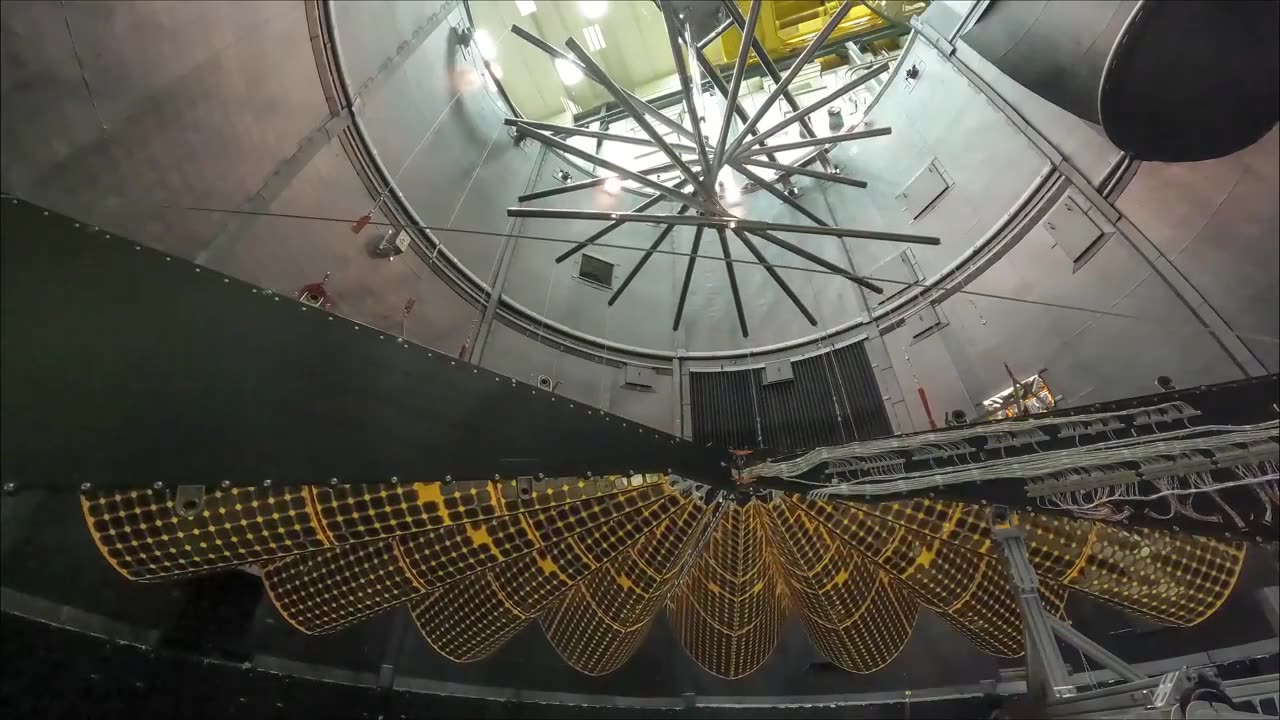Premium Only Content

NASA’s Lucy Mission Extends its Solar Arrays
NASA's Lucy mission has achieved an important milestone as it successfully extended its solar arrays, a critical operation in its journey to explore the distant and enigmatic Trojan asteroids. Lucy, a groundbreaking space mission, was launched in October 2021 with the primary goal of studying these ancient relics of our solar system's formation, which are located in the Sun-Jupiter L4 and L5 Lagrange points.
The extension of Lucy's solar arrays is a crucial operation that ensures the spacecraft's continued power generation and functionality throughout its mission. These high-efficiency solar panels are equipped with state-of-the-art technology, designed to capture sunlight and convert it into electrical energy to power the spacecraft's instruments and systems. Extending the solar arrays allows Lucy to continue its mission to observe, analyze, and provide valuable insights into the Trojan asteroids.
By extending its solar arrays successfully, Lucy can continue its journey through the solar system, making its planned flybys of several Trojan asteroids, including a historic encounter with the binary asteroid system Patroclus-Menoetius. With its suite of scientific instruments and extended power source, Lucy is poised to unravel the mysteries surrounding these ancient celestial objects, shedding light on the early history of our solar system and the broader cosmic processes that shaped it.
The extension of the solar arrays not only ensures the mission's longevity but also signifies the dedication and precision of NASA's engineers and mission controllers in managing this complex and pioneering mission. Lucy's successful solar array extension is a testament to human ingenuity and the pursuit of scientific knowledge as we venture deeper into the cosmos to uncover the secrets of our celestial neighborhood.
-

VINCE
2 hours agoPresident Trump The Businessman Strikes Again | Episode 22 - 04/15/25
67.6K91 -
 54:30
54:30
BonginoReport
4 hours agoLeft Demands Return of MS-13 Gang Member - BR Early Edition w/ Evita (Ep.182) - 04/15/2025
94.9K79 -
 LIVE
LIVE
LFA TV
13 hours agoLFA TV - ALL DAY LIVE STREAM 4/15/25
3,349 watching -
![🔴[LIVE] MASSIVE Swings Incoming! || The MK Show](https://1a-1791.com/video/fww1/71/s8/1/F/s/c/C/FscCy.0kob-small-The-MK-Show-Apr.-15th.jpg) LIVE
LIVE
Matt Kohrs
13 hours ago🔴[LIVE] MASSIVE Swings Incoming! || The MK Show
1,240 watching -
 LIVE
LIVE
Badlands Media
5 hours agoBadlands Daily: April 15, 2025
5,817 watching -
 LIVE
LIVE
The Big Mig™
3 hours agoFree Tina Peters Now! w/ Steve Stern
5,079 watching -
 LIVE
LIVE
Wendy Bell Radio
6 hours agoLiberals Love Criminal Illegals More Than They Love America
9,217 watching -
 1:15:29
1:15:29
Dear America
14 hours agoAustin Metcalf Killer RELEASED, JD Vance Fumbles CFP Trophy + CNN Gets Bullied In The Oval Office!
34.9K14 -
 LIVE
LIVE
Major League Fishing
23 hours agoLIVE Tackle Warehouse Invitationals, Stop 3, Day 1
716 watching -
 55:17
55:17
2 MIKES LIVE
2 hours agoTHE MIKE SCHWARTZ SHOW with DR. MICHAEL J SCHWARTZ 04-15-2025
6.51K